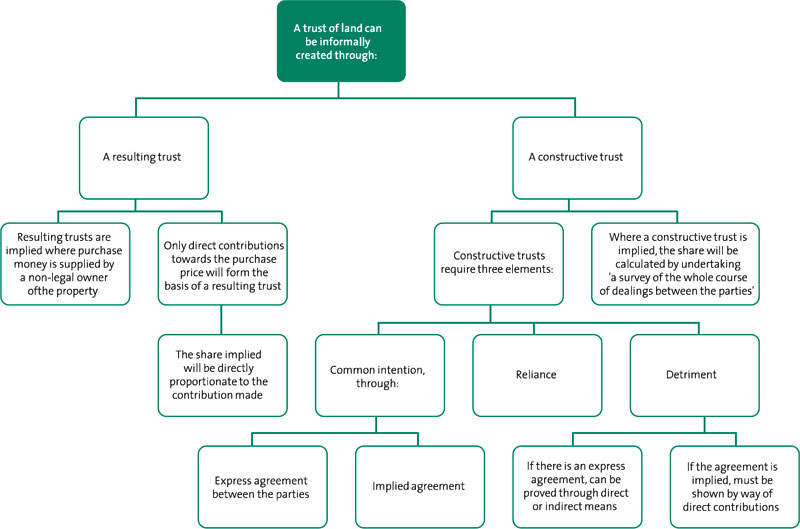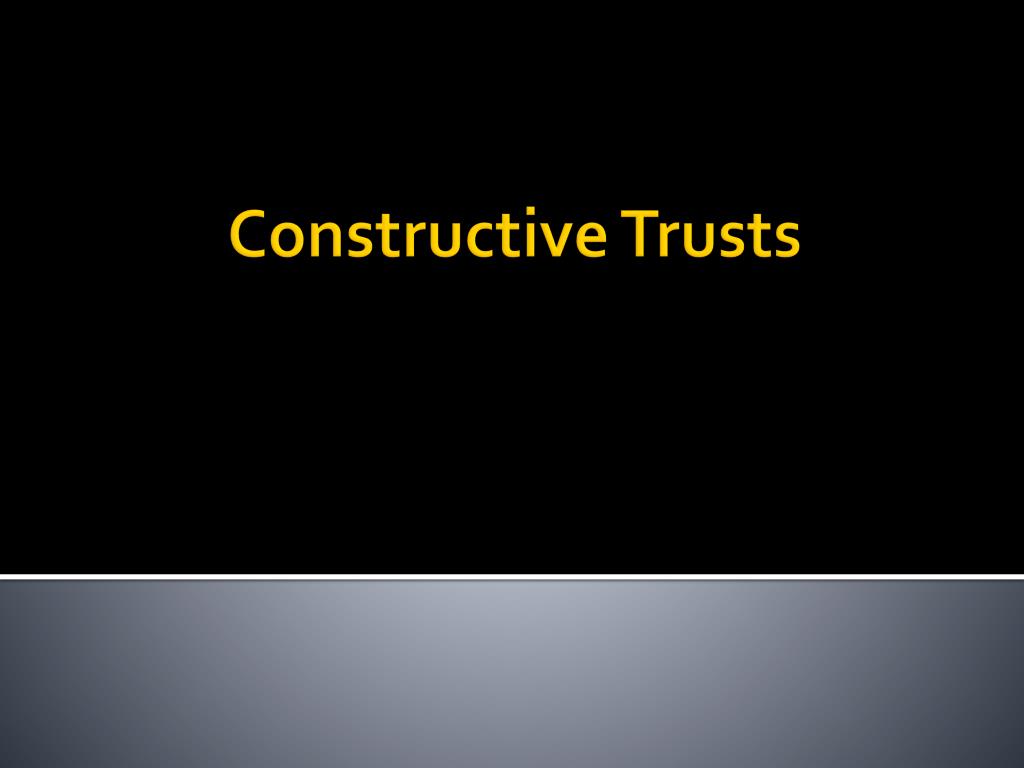Why You Should Understand What Is A Constructive Trust in Property Law
Why You Should Understand What Is A Constructive Trust in Property Law
Blog Article
Unveiling the Advantages of a Positive Trust in Resolving Beneficiary Disputes
The concept of a useful depend on emerges as a critical device in the intricate realm of beneficiary disputes, supplying a nuanced solution to conflicts that usually develop from wrongful residential or commercial property retention. By promoting a fiduciary connection in between parties, this equitable treatment not just helps with quick resolutions yet also offers to hinder potential misconduct. As we discover the multifaceted benefits of useful depends on, one might begin to question exactly how these mechanisms can reshape the landscape of estate disputes and add to an extra fair circulation of assets among beneficiaries.
Meaning of Constructive Depend On
A positive trust fund is regularly established by courts to address situations where one party has wrongfully obtained or retained building that rightfully comes from an additional (What Is A Constructive Trust). This lawful idea is not a conventional depend on, as it does not call for the rules typically linked with depend on creation, such as a created contract or the intention of the celebrations involved. Rather, a constructive trust fund develops by operation of legislation, working as a fair remedy to avoid unfair enrichment
The courts impose a useful trust when it is figured out that a person party holds property under scenarios that, in equity and good principles, should not permit them to retain it. Typical circumstances include illegal actions, breaches of fiduciary duty, or scenarios where a celebration has gotten property with inappropriate ways. The constructive depend on hence functions to secure the civil liberties of the rightful owner by making certain that the residential or commercial property is held for their advantage.
Once established, the positive count on calls for the event in ownership of the building to convey it to the rightful owner, hence rectifying the wrongful circumstance. This mechanism highlights the legal system's commitment to justness and justice in residential property disputes, stressing the value of honest conduct in ownership and transfer of properties.
Benefits of Positive Counts On
Positive counts on provide a number of considerable advantages in legal disputes entailing building legal rights. Primarily, they offer as an equitable solution, allowing courts to address scenarios where a celebration has actually wrongfully gotten or maintained property that rightfully belongs to one more. This develops a structure for fairness, ensuring that the rightful owner is made up and the unfair enrichment of the offender is stopped.
Additionally, constructive trusts can expedite resolution in problems over estate assets, thereby minimizing the lengthy and frequently contentious lawsuits processes related to typical building conflicts. Their flexibility permits courts to customize remedies to fit the details scenarios of each case, which can bring about even more adequate results for all events included.
Additionally, positive counts on promote openness and responsibility among recipients and fiduciaries, as they require the last to act in the most effective interests of the previous. This reinforces the honesty of fiduciary connections, promoting depend on and collaboration. By preventing misconduct relevant to residential property possession, useful counts on add to the overall stability of economic and lawful systems, guaranteeing that property legal rights are appreciated and maintained within society.
How Constructive Counts On Job

In method, when a positive trust is imposed, the court determines the building concerned and establishes a fiduciary connection between the events entailed. The event that holds the property comes to be a trustee, bound to manage it for the benefit of the rightful owner, known as the beneficiary. This partnership is not based upon an official contract however rather on the principle of equity, intending to fix scenarios where one celebration's gain directly correlates with another's loss.

Study and Examples
When examining the practical application of constructive trust funds, various case researches highlight exactly how courts navigate intricate circumstances involving unjustified enrichment. One significant situation is * Pettkus v. Becker *, where the Supreme Court of copyright developed a constructive trust to fix the unfair enrichment of one party over an additional in a long-lasting relationship. The court established that the payments of one partner to the procurement of this post residential property justified the charge of a useful trust, making certain fair distribution.
An additional considerable instance is * Gisborne v. Gisborne *, where the court imposed a constructive trust fund to attend to the claims of brother or sisters over their departed brother's estate. The court identified the contributions made by the brother or sisters in preserving the family members building, causing a choice that called for the estate to represent those payments, thus preventing unfair enrichment.
These cases exemplify just how constructive depends on can effectively resolve disagreements by focusing on justness and the prevention of unfair enrichment. By examining the particular payments and conditions of the parties entailed, courts can apply positive trusts to attain just results, inevitably reinforcing the fair principles underpinning these legal devices.

Steps to Develop a Constructive Trust Fund
To develop a useful trust, a number of key steps have to be followed to make certain that the claim is corroborated and legitimately recognized. The complaintant should demonstrate the existence of a fiduciary connection or a circumstance that necessitates the charge of a constructive count on, such as scams, unfair enrichment, or a violation of obligation.
2nd, it is vital to gather and present compelling evidence that supports the claim. This includes paperwork and statements that show the conditions bring about the claimed wrongful retention of building or benefits by the trustee.
Third, the claimant must submit a request in the proper court, expressing the premises for asking for the charge of you can try these out a positive trust fund. This application has to lay out the specifics of the relationship and the unjust enrichment that Visit Website requires the trust fund.
Verdict
In verdict, constructive depends on stand for a vital fair treatment in the world of recipient conflicts, properly attending to wrongful residential or commercial property retention and stopping unjust enrichment. Eventually, positive counts on advertise justness among recipients, guaranteeing that rightful possession is kept and safeguarded.
A positive trust is often developed by courts to address situations where one celebration has actually wrongfully obtained or maintained property that truly belongs to another.The courts impose a useful trust fund when it is figured out that one event holds home under conditions that, in equity and good principles, ought to not permit them to preserve it. By dissuading misbehavior relevant to residential or commercial property possession, positive trust funds contribute to the general security of financial and legal systems, ensuring that home civil liberties are valued and upheld within society.
In method, when a positive trust is enforced, the court recognizes the property in question and develops a fiduciary connection in between the celebrations included. What Is A Constructive Trust. The court identified that the payments of one partner to the purchase of building warranted the charge of a positive trust fund, making certain equitable distribution
Report this page